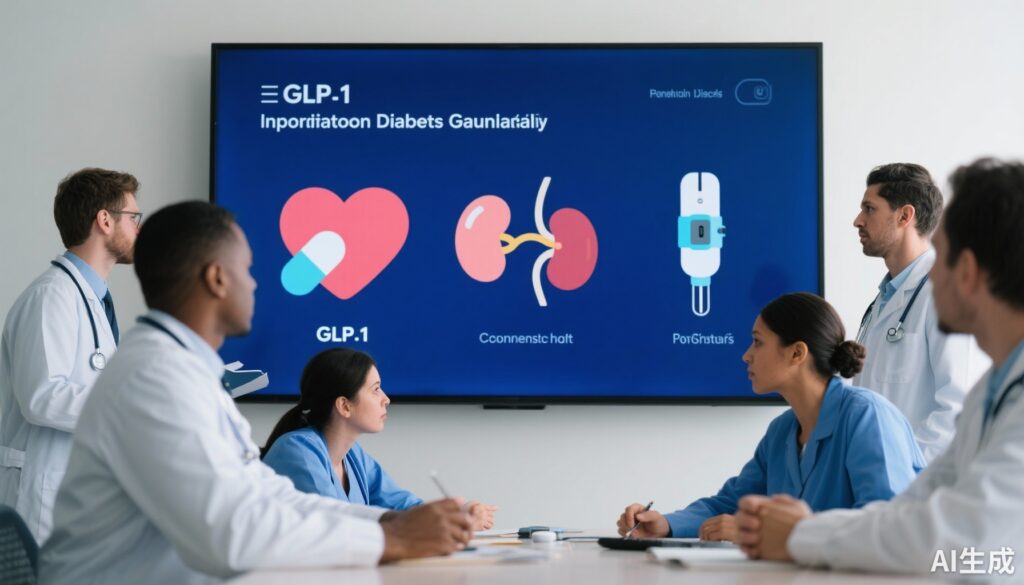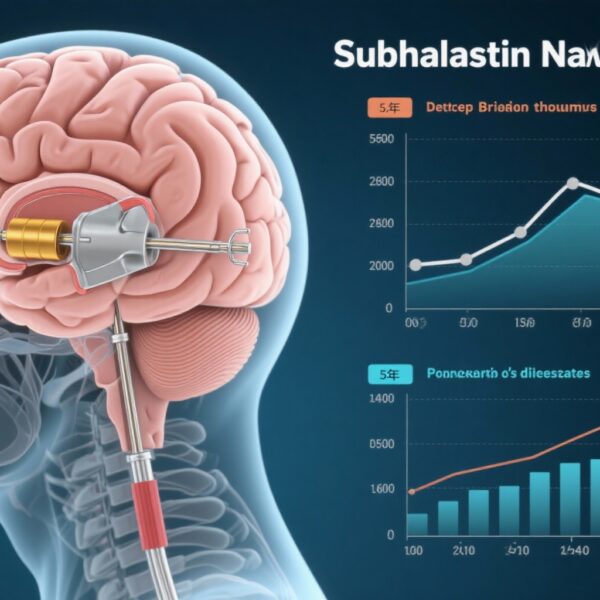Introduction and Context
The American Diabetes Association (ADA) publishes annual “Standards of Medical Care in Diabetes” to consolidate the latest evidence and provide actionable clinical recommendations. The 2024 Standards (Diabetes Care. 2024;47[S1]) arrive amid a rapid expansion of diabetes and obesity pharmacotherapy, growing evidence for cardiorenal protection from drug classes originally developed for glucose lowering, and wider adoption of diabetes technologies. These shifts created an urgent need to integrate new trial data and real-world considerations into clinical pathways.
Why this update matters now
– New or newly available drugs — notably semaglutide 2.4 mg and tirzepatide — have produced unprecedented weight loss and improved glycemia in people with type 2 diabetes and in those with obesity. Clinicians need guidance on when to prioritize these agents and how to counsel patients on benefits and risks.
– SGLT2 inhibitors and some GLP‑1 receptor agonists now have high-quality evidence for reducing cardiovascular (CV) and kidney outcomes in people with diabetes, independent of baseline HbA1c. The Standards sharpen recommendations to use these agents based on comorbidities rather than glycemic thresholds alone.
– Continuous glucose monitoring (CGM), diabetes technology, and individualized glycemic targets are being used more widely; the 2024 update expands guidance on who should receive technology and when.
The ADA 2024 Standards therefore emphasize a more integrated, comorbidity‑driven approach to medication selection, stronger attention to obesity as a treatable comorbidity, and clearer technology guidance.
New Guideline Highlights
Major themes of the 2024 Standards
– Prioritize cardiorenal benefit: For people with type 2 diabetes and established atherosclerotic cardiovascular disease (ASCVD), heart failure (HF), or chronic kidney disease (CKD), consider an SGLT2 inhibitor and/or a GLP‑1 receptor agonist with demonstrated benefit — regardless of baseline HbA1c or individualized glycemic target.
– Treat obesity as part of diabetes care: The Standards expand recommendations supporting use of effective weight‑loss pharmacotherapy (GLP‑1 receptor agonists and the dual GIP/GLP‑1 agonist tirzepatide) when indicated, and incorporate weight management into routine diabetes treatment planning.
– Broader use of technology: CGM is recommended beyond people with type 1 diabetes and intensive insulin users — the 2024 Standards support CGM for many adults with type 2 diabetes who are on insulin and, in selected cases, for non‑insulin users to improve self‑management and reduce hypoglycemia.
– Individualization remains central: HbA1c, glucose targets, and treatment choices are to be individualized based on comorbidities, hypoglycemia risk, life expectancy, and patient preferences.
Key takeaways for clinicians (at a glance)
– Use SGLT2 inhibitors in patients with type 2 diabetes and HF or CKD to reduce hospitalization and slow progression, even if A1c is at goal.
– Offer GLP‑1 receptor agonists (or tirzepatide) to patients with type 2 diabetes and obesity when weight loss would benefit cardiometabolic risk and quality of life — but avoid these agents in pregnancy.
– Consider early combination therapy for many patients with high baseline HbA1c (>1.5% above target) and/or high ASCVD risk.
– Expand access to CGM for insulin-treated type 2 diabetes; consider CGM for selected non‑insulin-treated patients for education and hypoglycemia detection.
Updated Recommendations and Key Changes (Compared with 2023)
Summary of major updates
– Stronger, comorbidity-focused endorsement of SGLT2 inhibitors and GLP‑1 receptor agonists: The 2024 Standards elevate the role of these drug classes to treat organ‑level risk (heart, kidney, vascular) rather than only to lower glucose.
– Explicit incorporation of tirzepatide and obesity‑focused pathways: The document adds more detailed guidance on using tirzepatide — a dual GIP/GLP‑1 receptor agonist — for weight loss and glycemic control in type 2 diabetes, reflecting SURPASS and SURMOUNT trial evidence.
– Expanded technology guidance: More permissive recommendations for real‑time and intermittently scanned CGM for people with type 2 diabetes on insulin, and conditional support for some non‑insulin users.
– Practical algorithms for initiating combination therapy: Emphasis on earlier combination GLP‑1/SGLT2 use when there is high cardiorenal risk; a trade‑off between glycemic potency and organ protection is made explicit.
Table: Selected changes from 2023 to 2024 (high‑level)
– Comorbidity-based therapy: 2023 — recommended; 2024 — emphasized and expanded with operational recommendations.
– Obesity pharmacotherapy (tirzepatide): 2023 — emerging evidence referenced; 2024 — specific guidance added for use in type 2 diabetes and weight management.
– CGM: 2023 — recommended for most type 1 and some type 2 insulin users; 2024 — broadened eligibility for CGM in type 2 insulin users and selected non‑insulin users.
Evidence driving the updates
The changes reflect large randomized trials showing robust weight and glycemic effects of GLP‑1 receptor agonists and tirzepatide (e.g., STEP, SURMOUNT, SURPASS programs), and strong cardiorenal outcome data for SGLT2 inhibitors (e.g., DAPA‑HF, CREDENCE, DAPA‑CKD) and several GLP‑1 RAs (e.g., LEADER, REWIND). The committee synthesized RCT evidence and real‑world safety signals to balance efficacy, side effects, and feasibility.
Representative citations
– American Diabetes Association. Standards of Medical Care in Diabetes—2024. Diabetes Care. 2024;47(Suppl 1).
– Wilding JPH, et al. Once‑Weekly Semaglutide in Adults with Overweight or Obesity. N Engl J Med. 2021;384:989–1002. (STEP trials)
– Wilding JPH, et al. Tirzepatide for Obesity—SURMOUNT‑1. N Engl J Med. 2022;387:205–216.
– Heerspink HJL, et al. DAPA‑CKD Trial (dapagliflozin and renal outcomes). N Engl J Med. 2020;383:1436–1446.
– Marso SP, et al. LEADER Trial (liraglutide and cardiovascular outcomes). N Engl J Med. 2016;375:311–322.
Topic‑by‑Topic Recommendations
1) Diagnostic criteria and risk stratification
– Diagnostic criteria for diabetes (fasting glucose, 2‑hour OGTT, HbA1c) remain unchanged.
– Risk stratification now explicitly includes organ‑specific risk: established ASCVD, HF, CKD (eGFR and albuminuria) should drive drug selection.
2) Glycemic targets and individualized goals
– Typical HbA1c goal for many nonpregnant adults: <7.0% — individualized upward for patients with limited life expectancy, advanced comorbidities, or hypoglycemia risk.
– For selected older adults with complex comorbidities: individualized targets such as 1.5% above target) or with symptomatic hyperglycemia, early combination therapy is recommended.
– For patients with type 2 diabetes and obesity, consider a GLP‑1 receptor agonist or tirzepatide as part of early therapy if weight loss is a priority.
4) Cardiorenal protection: SGLT2 inhibitors and GLP‑1 receptor agonists
Recommendation summary
– SGLT2 inhibitors: Recommended for people with type 2 diabetes and HF (reduced ejection fraction or preserved in many cases) or CKD to reduce hospitalization for HF and slow CKD progression; benefits are generally independent of baseline HbA1c.
– GLP‑1 receptor agonists: Recommended for people with type 2 diabetes and established ASCVD to reduce major adverse cardiovascular events and for weight management when appropriate.
Practical points
– Choice between SGLT2 and GLP‑1 may be based on the dominant comorbidity (HF/CKD favor SGLT2; ASCVD and need for weight loss favor GLP‑1), side effect profile, and access/cost.
– Monitor renal function and volume status when starting SGLT2 inhibitors; counsel on genital infection risk and provide sick‑day guidance.
5) Obesity management and pharmacotherapy
– The 2024 Standards recognize obesity as a major, treatable comorbidity in diabetes care.
– Pharmacologic therapy with GLP‑1 receptor agonists (semaglutide 2.4 mg) or tirzepatide is appropriate for adults with type 2 diabetes and excess weight when lifestyle interventions alone are insufficient and no contraindications exist.
– Pregnancy: GLP‑1 receptor agonists and tirzepatide are not recommended in women planning pregnancy or who are pregnant; effective contraception and medication discontinuation are advised before conception.
6) Technology: CGM and insulin delivery
– CGM is recommended for most people with type 1 diabetes and should be offered to many people with type 2 diabetes treated with intensive insulin regimens.
– For selected people with type 2 diabetes not on insulin, CGM can be considered to improve self‑management, detect asymptomatic hypoglycemia, and support behavior change.
7) Special populations
– Pregnancy: Continue established guidance — insulin remains the preferred agent for glycemic control in pregnancy. GLP‑1 RAs and tirzepatide should be avoided.
– Older adults: Individualize HbA1c targets and minimize hypoglycemia risk; consider simpler regimens.
– Children and adolescents: Follow pediatric‑focused recommendations in the Standards and coordinate with pediatric endocrinology for pharmacotherapy choices.
Recommendation Grades (selected examples)
– Use of SGLT2 inhibitors in type 2 diabetes with symptomatic HF: Grade A (large RCTs demonstrating benefit).
– Use of GLP‑1 RAs for people with type 2 diabetes and established ASCVD: Grade A.
– Use of CGM in adults with type 2 diabetes on multiple daily insulin injections: Grade A to B depending on context.
– Use of tirzepatide for weight management in adults with type 2 diabetes and obesity: Grade B (strong RCT evidence for weight and glycemic outcomes; ongoing evaluation for long‑term organ outcomes).
Expert Commentary and Insights
Committee perspective
The ADA Standards Committee emphasizes a move from a purely glucose‑centric model toward a patient‑centered, organ‑risk‑driven framework. In practical terms, this means that clinicians should ask: “Does this patient have heart failure, CKD, or ASCVD?” — and let the answer guide which drug class to prioritize.
Areas of consensus
– Treating obesity is integral to diabetes care.
– SGLT2 inhibitors and GLP‑1 receptor agonists provide benefits beyond glucose lowering.
– Technology (CGM) is a valuable tool to reduce hypoglycemia and support self‑management.
Areas of controversy and implementation challenges
– Cost and access: High prices and insurance restrictions limit patient access to GLP‑1 agents, tirzepatide, and CGM. This is the most frequently cited barrier by clinicians and patients.
– Long‑term safety and outcomes: For newer agents like tirzepatide, long‑term cardiovascular outcome data were still accumulating at the time of the 2024 update; committees balanced robust short‑term metabolic benefits against incomplete long‑term organ‑level data.
– Equity and workforce capacity: Expanding use of complex medications and technology raises questions about equitable access, clinician training, and the capacity of primary care to implement sophisticated medication titration and monitoring.
Practical Implications for Clinical Practice
How to apply the 2024 Standards in everyday care
– Start with comorbidity‑directed prescribing: For patients with HF or CKD, ensure evaluation for SGLT2 inhibitor candidacy regardless of HbA1c; for ASCVD or when weight loss is a key goal, prioritize GLP‑1 RAs or tirzepatide.
– Discuss benefits and realistic expectations: Explain that modern GLP‑1 and GIP/GLP‑1 agents often produce substantial weight loss and meaningful A1c reductions, but they may cause nausea, gastrointestinal side effects, and require cost considerations.
– Monitor and mitigate risks: For SGLT2 inhibitors, counsel on genital infections, volume status, and transient eGFR dips; for GLP‑1/tirzepatide, counsel on GI effects and advise discontinuation in pregnancy.
– Use technology strategically: Offer CGM to eligible insulin users and consider CGM for non‑insulin patients who have hypoglycemia or need behavior‑change support.
– Address access: Advocate for prior authorization support, structured weight‑management programs, and use patient assistance programs when available.
A brief patient vignette (illustrative)
Name: Maria, 58-year-old with type 2 diabetes (A1c 8.2%), obesity (BMI 36 kg/m2), and a history of myocardial infarction.
Applying the 2024 Standards: Because Maria has established ASCVD and obesity, a GLP‑1 receptor agonist or tirzepatide would be a reasonable next step to address both glycemia and weight while offering potential CV benefit. If she also had CKD or symptomatic heart failure, an SGLT2 inhibitor would be prioritized for organ protection. Shared decision‑making should address side effects, cost, contraception if relevant, and follow‑up plans for monitoring and titration.
Future Directions and Research Needs
– Long‑term CV and renal outcome trials for tirzepatide and other dual‑agonists are needed to clarify organ‑level benefits.
– Real‑world effectiveness and safety data will inform equitable implementation and long‑term tolerability.
– Strategies to increase access — including value‑based pricing, payer coverage reforms, and clinician training — will be essential to translate guideline recommendations into population health gains.
References
1. American Diabetes Association. Standards of Medical Care in Diabetes—2024. Diabetes Care. 2024;47(Suppl 1). Available at: https://diabetesjournals.org/care/issue/47/Supplement_1
2. Wilding JPH, et al. Once‑Weekly Semaglutide in Adults with Overweight or Obesity. N Engl J Med. 2021;384:989–1002.
3. Wilding JPH, Batterham RL, Calanna S, et al. Tirzepatide once weekly for the treatment of obesity. N Engl J Med. 2022;387:205–216.
4. Heerspink HJL, et al. Dapagliflozin in patients with chronic kidney disease. N Engl J Med. 2020;383:1436–1446.
5. Marso SP, et al. Liraglutide and cardiovascular outcomes in type 2 diabetes. N Engl J Med. 2016;375:311–322.
6. McMurray JJV, et al. Dapagliflozin in patients with heart failure and reduced ejection fraction. N Engl J Med. 2019;381:1995–2008.
(Readers should consult the full ADA 2024 Standards document for the complete set of graded recommendations, detailed algorithms, and supporting evidence tables.)


